Have you been wondering how many violin types there are and which are the most popular?
In general, no two violins are the same. Some have found their way into musical history, while others are the go-to choice for those new to the world of violins. Playing the violin involves understanding your stringed instrument and its anatomy – everything from the chin rest to the sound box. If you are planning to buy your first violin and dive deep into learning it, or you have already been playing for a while, you might be curious what types of violin are available and how violins evolved over the centuries.
In this article, I’m taking an in-depth look at the most popular types of violin so that you get a taste of everything the violin family has to offer. Whether you’re looking to invest in a new violin or want to learn more about the different types of violins, this article will look at different types of violins, their origin, and their sound.
Are you looking for a violin but are not sure what size you need? Check out my article about the different sizes of violin, then come back here to find your perfect match.
Different Types of Violins
Modern Violin
The most common type of violin is called a modern violin. If you go to a music shop or look for an acoustic violin in online shops, you’ll most likely get that one. You may also find it under the name acoustic violin or classical violin.
Its hollow body, called the sound box, is made of wood and is responsible for resonating the sound created using the bow and the strings. Modern violins have metal and synthetic strings that are played with a Tourte bow.
The modern violin is often treated as a reference point as other violin types are being compared to it.
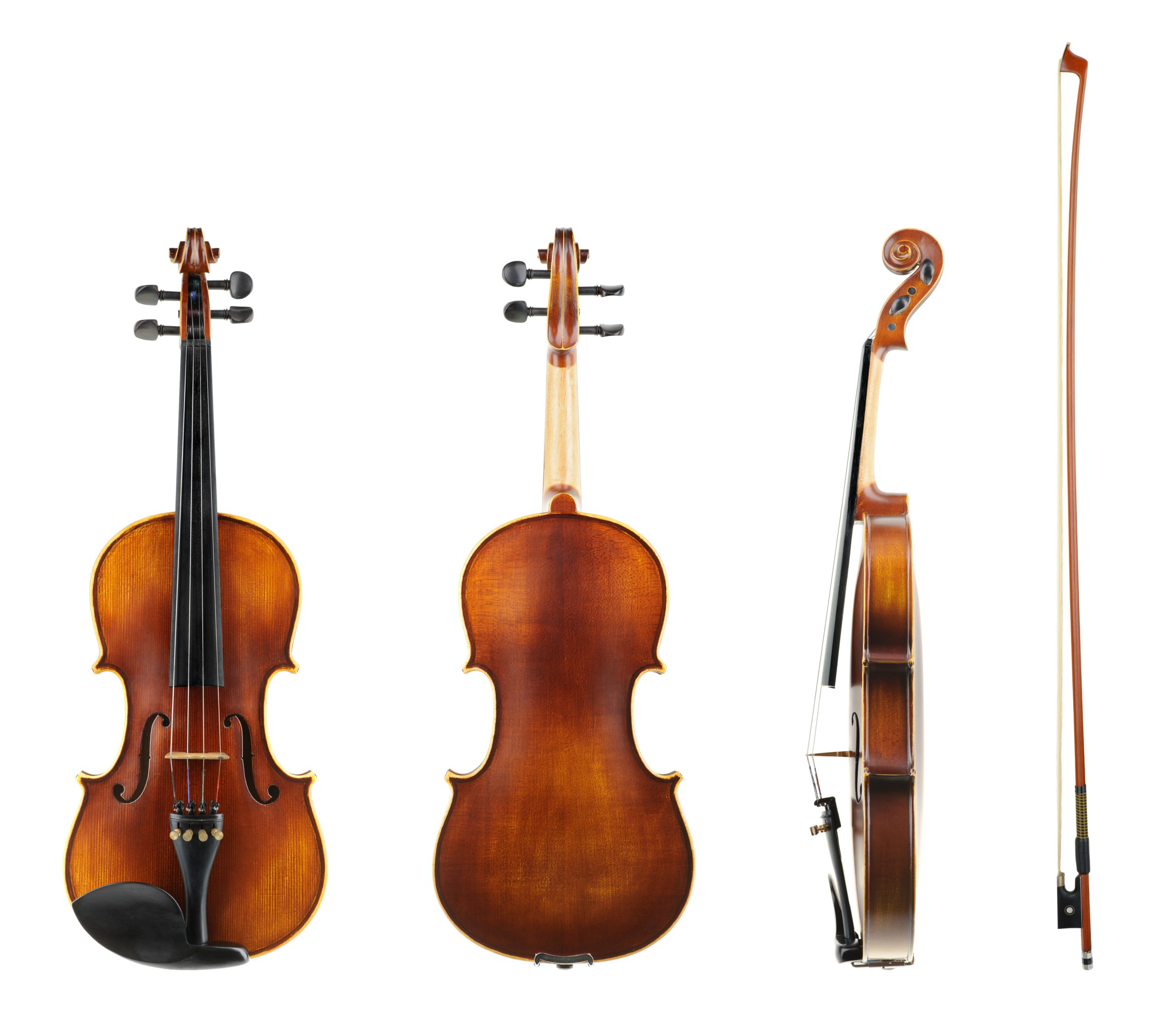
You can listen to the beautiful sound of a classical violin in this recording of the Sibelius Concerto, op. 47 played by Hilary Hahn:
Let’s have a quick look at the history. The modern violin originates from the Baroque violin, and this one had its origins in a few earlier instruments:
- lira da braccio – Italian instrument with 7 strings used mainly by poets-musicians in the 15th and 16th centuries as an accompaniment to recitations and narrative poetry
- vielle (also: fidel, viuola) – French oval instrument popular among troubadours in the 13th to 15th centuries, invented around 10th century
- rebec – Spanish 3-stringed instrument, which appeared between the 11th and 13th centuries
- rabab – Arabian 2-stringed fiddle brought to Europe in the 11th century
- pear-shaped lira from the 9th century.
Fiddle
The words ‘violin’ and ‘fiddle’ are sometimes used interchangeably because they’re the same thing. I already covered the differences between fiddles and violins, but I’ll also give you a recap in this article.
The style of music shows the subtle difference between classical violins and fiddles. The fiddle is a key part of traditional folk music, where the musicians learn by ear instead of through written sheet music. Fiddlers usually play music that is designed for dancing, with quick runs and string changes. Classical violin music tends to be more complex and usually features a high range of different bowing techniques, left hand techniques, and dynamic differences. It’s not unusual to find fiddlers who are originally classically trained.
Fiddle players sometimes prefer a flatter bridge for their instrument, instead of the arched bridge of classic violins. By having a flatter bridge, fiddlers are able to play more notes at once.
Fiddling style depends on where it is played and by whom. In this video, Carol Ann Wheeler shows examples of fiddle music from around the world:
Baroque Violin
The predecessor of the modern violin is the Baroque violin. It’s the most popular choice amongst violinists who want to recreate the authentic classical sound of a violin.
The baroque violins you find today are designed to be as close to those used in the 1650 – 1750s as possible. It comes from the same period as these great composers:
- Johann Sebastian Bach (1685–1750)
- Antonio Vivaldi (1678–1741)
- Tomaso Albinoni (1671–1751)
- Georg Philipp Telemann (1681–1767)
- Johann Pachelbel (1653–1706)
- George Frideric Handel (1685–1759)
Baroque violins use gut strings and a baroque-styled bow. They differ from our modern violins in the size of its bass bar, bridge, fingerboard, neck, and tailpiece. They don’t have a chin rest and are normally played without a shoulder rest. The baroque’s neck has a shallower angle, causing less pressure on the bridge and strings. Moreover, the fingerboard is shorter.
Despite those differences, a baroque and modern violin still appear fairly similar. The real difference is in their sound. A baroque violin has a gentler note and is often tuned lower. Most baroque players play with little to no vibrato.
Hardanger Fiddle
The Hardanger Fiddle comes from Norway, and it’s called a national instrument there. Its contemporary design is similar to a violin, but it differs from the 4 string violin as it has 8 or 9 strings. 4 of the strings are played similarly to a violin, while the rest resonate from them.
The appearance of a Hardanger Fiddle differs from a violin as it is made using a thinner wood. They’re usually highly decorated with images of carved animals and black ink decorations. It’s not uncommon to find mother-of-pearl on the fingerboard and tailpiece.
Like other fiddles, the Hardingfele (as it is called in Norwegian) is used to create traditional Norwegian folk music for dancing. A Hardanger usually leads a bridal processional to the church in Norway.
The earliest known Hardanger Fiddle was made by Ole Josen Jasstad in 1651 in Hardanger, giving the instrument its name. The current style of Hardanger was first made in 1850, adopting a similar structure to a violin.
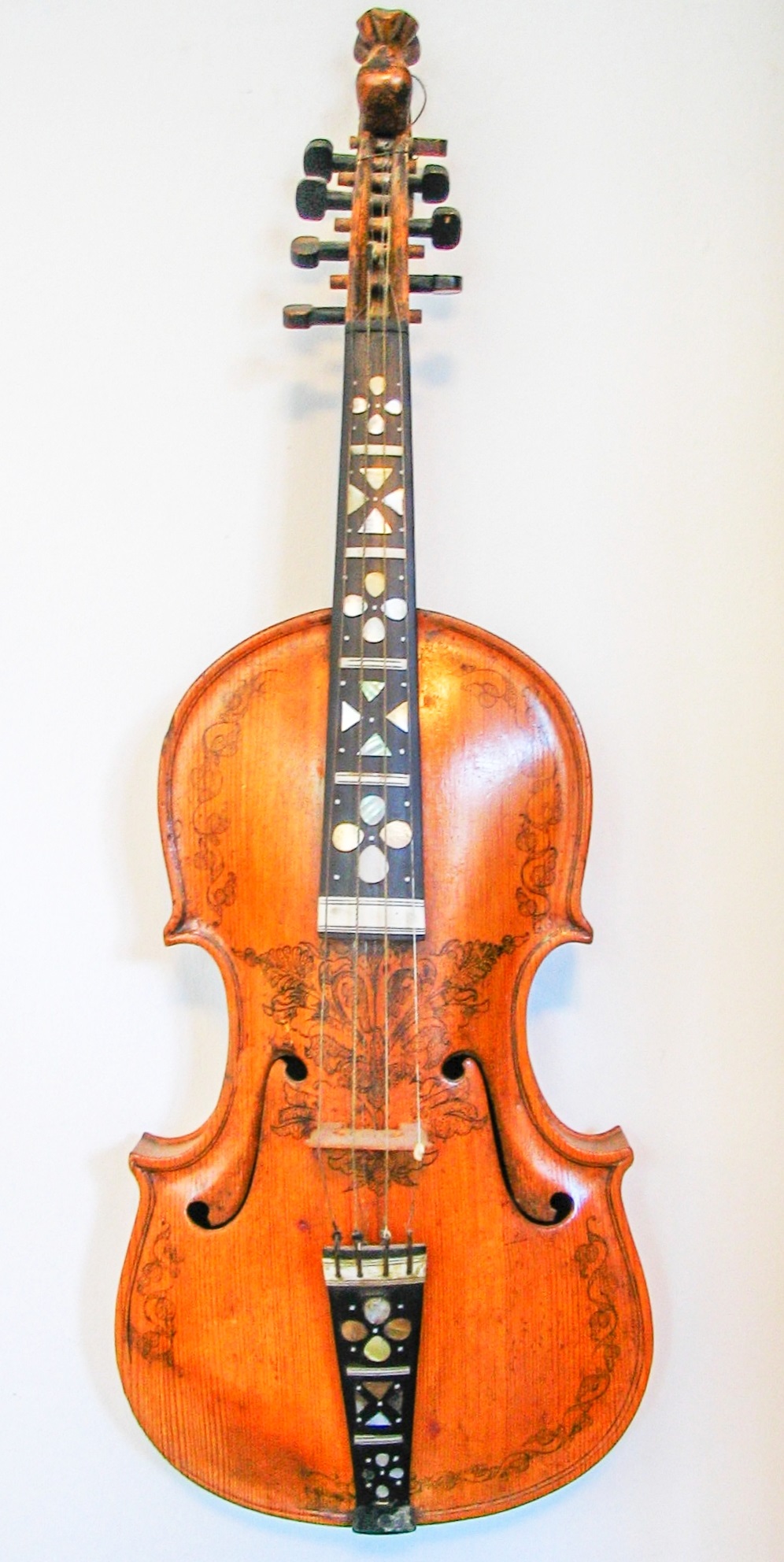
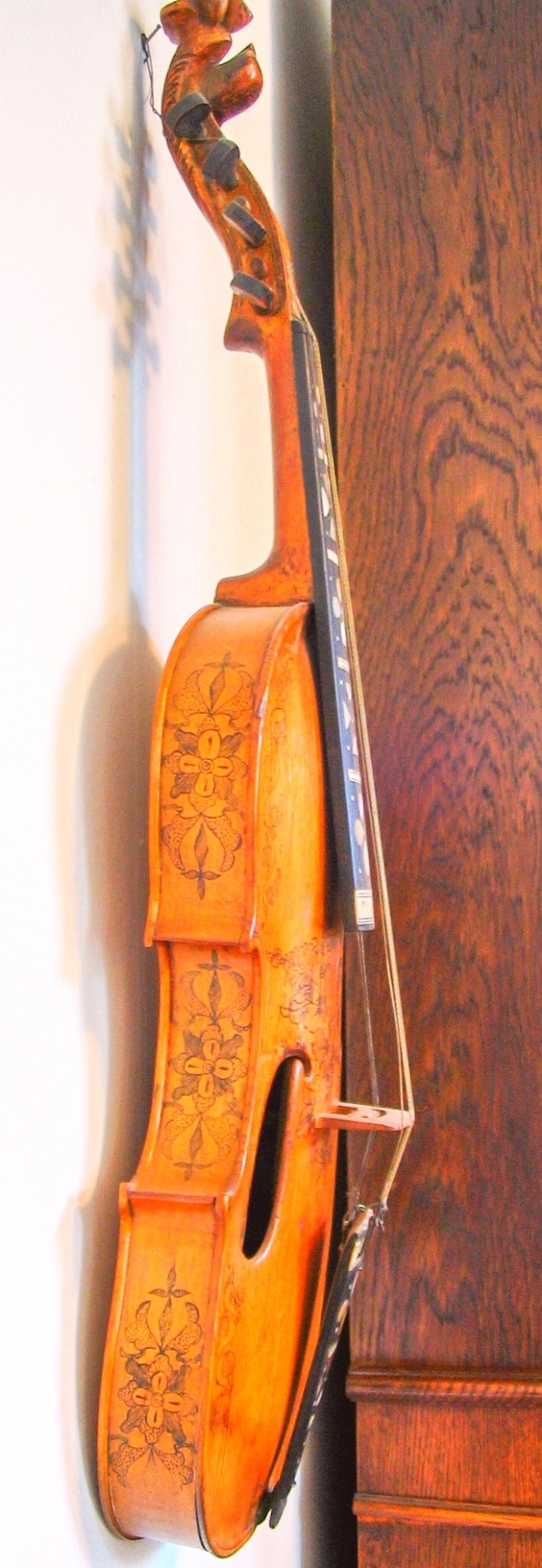
You can this beautiful Norwegian instrument on the finn.no webpage or ask a Norwegian luthier on en.gjerdefela.no
If you’re curious how a Hardanger Fiddle sounds, make sure to check out the video below.
Semi-Acoustic Violins, Electric Violins, and Silent Violins
I’m grouping the next three types of violins together to show the differences in their composition and when they’re used.
What is a semi-acoustic violin?
A semi-acoustic violin is also known as an acoustic-electric violin. It offers both acoustic and amplified options. The hollow body allows you to use it like a classical violin, while the built-in electronics offers amplification similar to electric violins.
Unlike electric violins, you won’t experience much feedback as they have a hollow body.
These violin types blend the classical with the contemporary to create a violin that offers the best of both worlds.
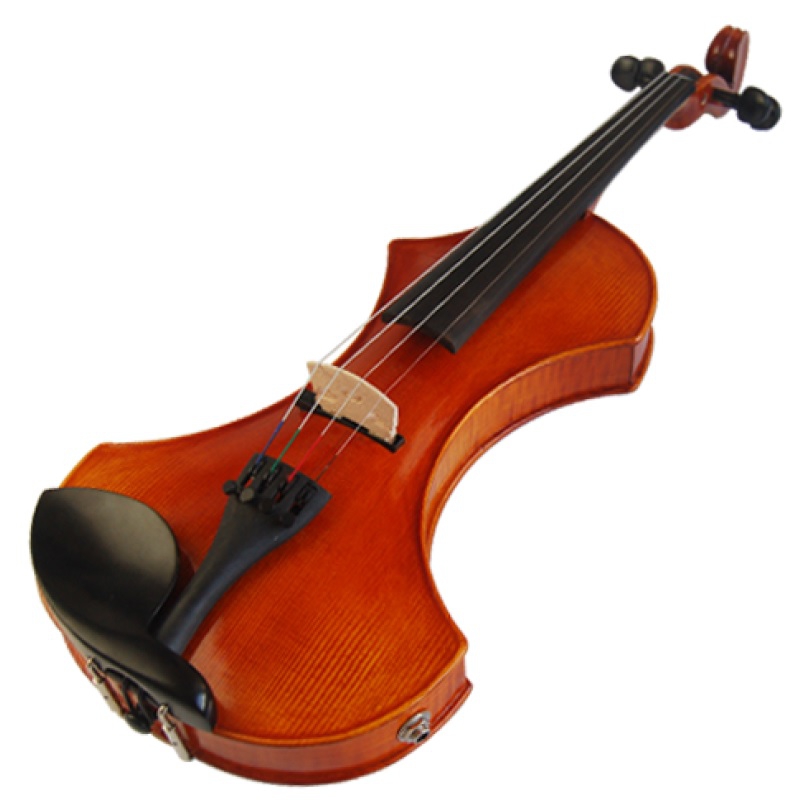
The shape of a sound box in an acoustic-electric violin might be modified in a very creative way as we can see on this example (instrument seen on musicsquare.eu).
If you’re struggling to choose between a modern violin and an electric one, the semi-acoustic instrument will be right up your street.
You get the traditional look of a violin with the flexibility of being creative and experimenting with amplification without committing fully to an electric violin.
The jack output allows you to amplify the violin, although this violin won’t offer you the ability for silent practice using headphones.
It’s a popular choice for those who want a variety of musical options to play. Although the sound quality is negatively affected by adding a pickup,if you want to be creative with amplification and adding effects to the sound it might be a perfect option for you.
The semi-acoustic violin is one of the most versatile stringed instruments and works for almost every setting.
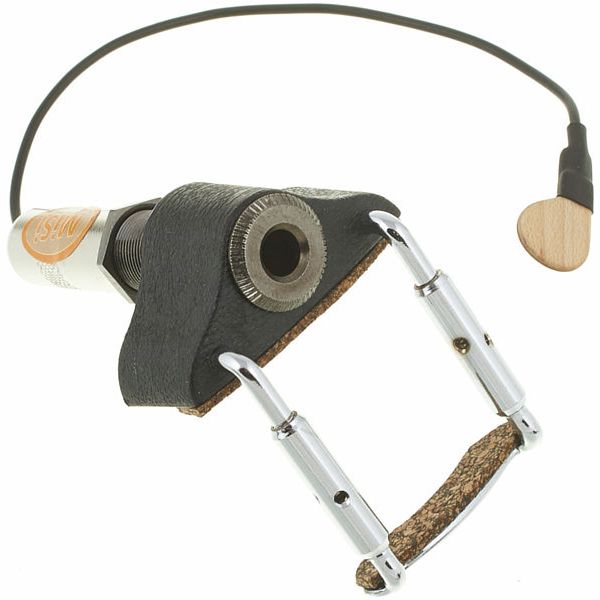
Alternatively, you can also transform your acoustic violin into a semi-acoustic one by adding a pickup. I am personally using MiSi Acoustic Trio/Vio with a preamp.
Below, you can listen to a semi-acoustic violin in Karin Griffin’s video. It also contains a quick comparison with acoustic and electric violins to give you a better overview.
© Karin Griffin Electric & Acoustic Violin
What are electric violins?
A violin that has no sound box and needs an amplifier or a speaker (in order for you to hear the true sound) is called an electric violin. Although the way of playing an acoustic and an electric violin is the same, the way the sound is produced is different.
Your classical violin has a hollow appearance that uses the vibration of the strings and the body of the violin to make a sound. Electric violins have a solid body, or just a frame of it, meaning that they produce little sound and need an amplifier to increase the volume.
Electric violins require more equipment to get started than their classical counterparts. Without a sound box, you’ll need an amplifier or speakers to hear the full sound produced by an electric model. Without an amplifier, the sound is muted compared to sound from an acoustic violin, but still can be heard in the whole apartment.
Most violinists say that playing the two string instruments is a similar experience, but the weight and sound of classical and electric violins are different. Like other string violins, the sound of an electric one will depend on its bridge and the number of pickups.
The electric violin produces a sharper sound than the four string violin. The sound it produces is synonymous with rock music and sounds more artificial compared to the natural sound of a classical violin. While you can create a similar sound to a classic violin, the sound remains audibly different.
While the classic violin has 4 strings, it’s not unusual to find a 5 string violin within the electric niche. They usually carry a C string, which is typically used for a viola.
Electric violins offer the option of more silent practice, allowing you to plug a headset in while practicing your music.
An electric option is ideal if you want to have a violin with more character. Unlike classical violins, you have more options for altering its physical appearance. While you’ll need the same elements like the neck, you can find a range of designs that offer something different than the traditional violin shape.
Swapping from a classical to an electric style of violin will take time for all violinists. It can be odd at first to play without a sound box naturally amplifying the sound. As you’ll be using an amplifier, the sound doesn’t have a clear path to your ears, which means it can take a while to regain your perception of the sound.
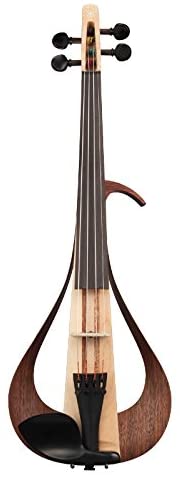
What is a silent violin?
There is no such thing as a truly silent violin.
A silent violin is basically an electric violin. The difference is in the electronics. The electronics built in the silent violin are designed for plugging in the headphones. To make it easier, it will have a Mini Jack Stereo 3.5 mm output, while the electric violin is designed to be connected to an amplifier or speaker with a Jack Stereo 6.3 mm output.
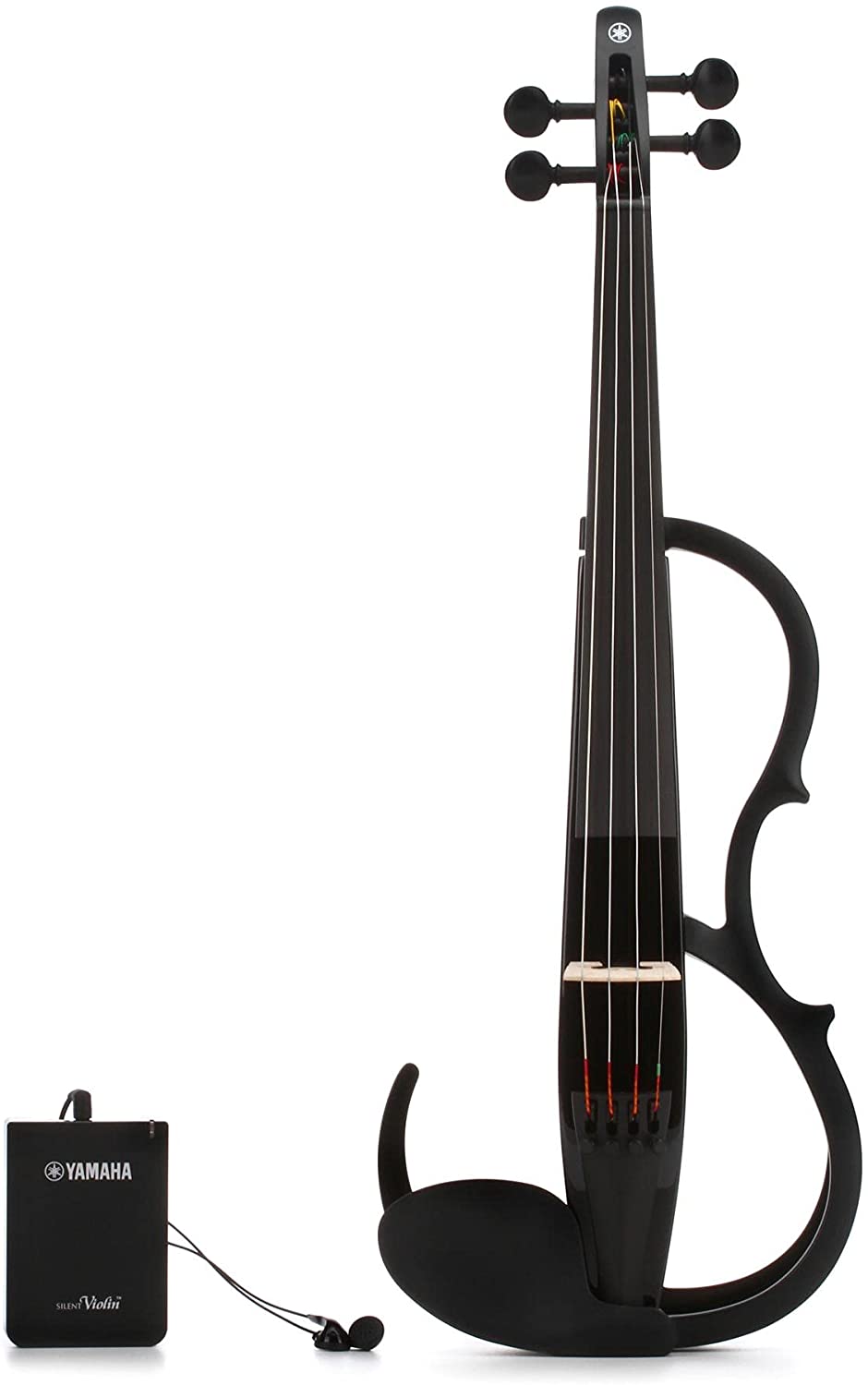
A so-called silent violin, e. g. Yamaha’s YSV104, is a popular choice for students because you’re able to plug in headsets to hear the amplified sound during your practice while not disturbing others as much as with an acoustic violin. Please keep in mind that the volume of the sound coming out of the silent violin will be the same as from another electric violin.
In the video below, you can listen to a silent violin and see for yourself how loud it is, as a sound level meter is visible.
If you’re in the market for an electric string instrument and aren’t worried about disturbing others, you can usually stick to electric types of the violin without the headphone feature.
If you’re debating between different types of violins, I always recommend starting with a classical violin as a beginner before transitioning to an electric violin.
If your sole reason to go silent is your worry about disturbing others, please consider buying a mute instead.
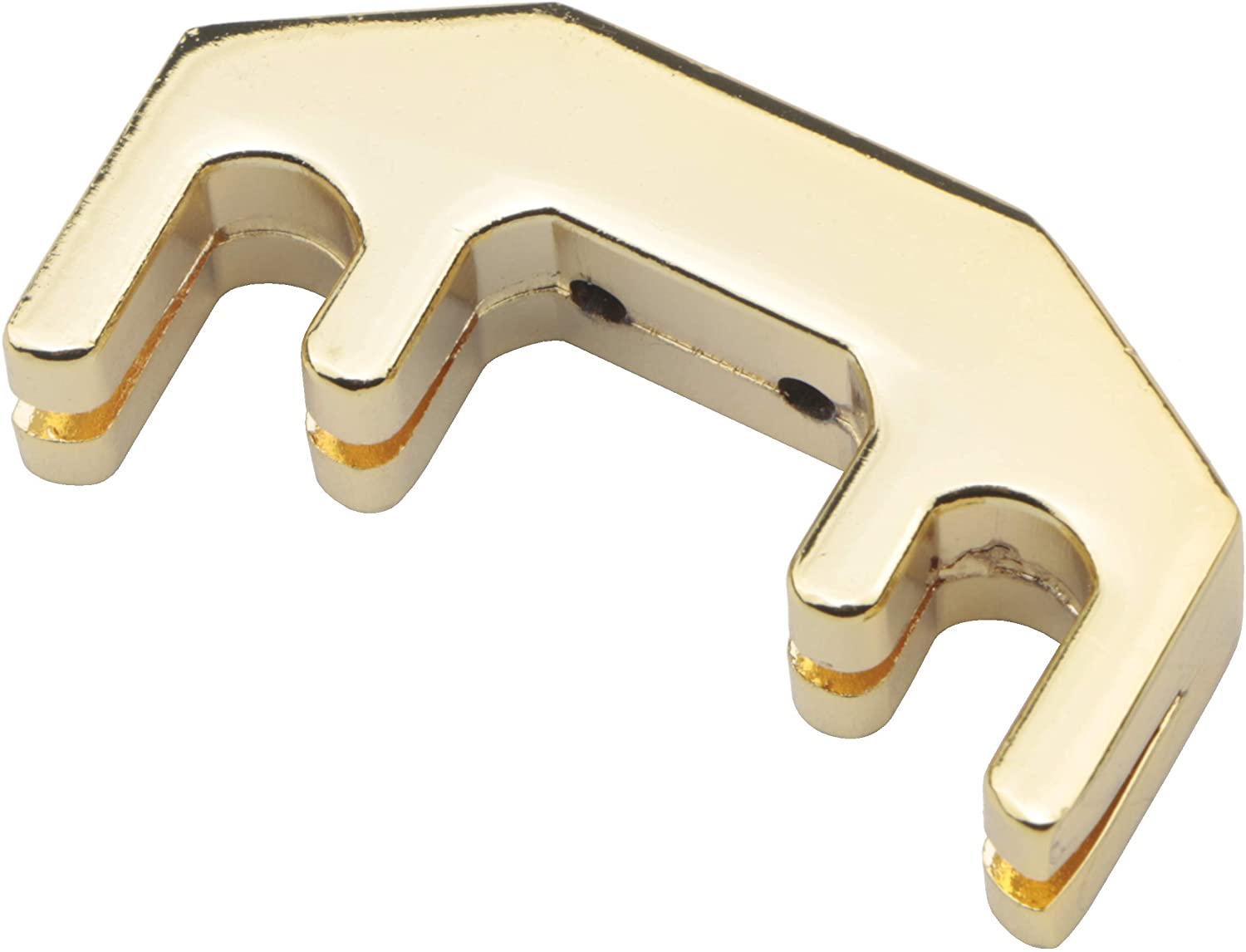
On the market you can find a lot of different violin mutes. They are made of miscellaneous materials and have various sizes, which affects how strongly or lightly they mute the sound. If you want to decrease the sound as much as possible, then I recommend you buy a heavy metal mute like this one.
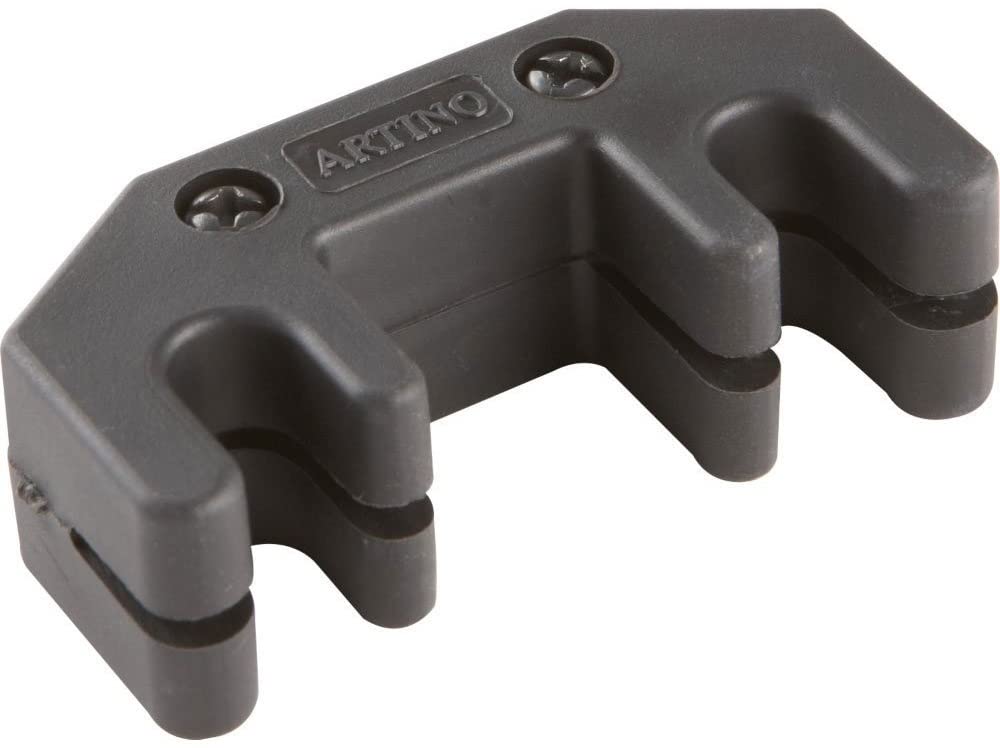
Please be careful! Metal mutes damage the bridge slightly (if you use it a lot) or scratch the varnish if it falls off. Moreover, if you choose a metal mute covered with rubber ( like this one), which mutes a bit less, you may observe that the sound is a bit warmer, the bridge will stay undamaged, but the rubber leaves dark marks on the bridge.
Violins with more than 4 strings
A 5 string violin has an extra string that is tuned to a pitch which is lower than the usual range of a violin. Along with the traditional G, D, A, and E strings, the 5 string violin features a lower C string.
This style entered the violin family as a way for musicians to experience the best of a violin and viola by combining their pitch range. The 5 string violin was popularized by Bobby Hicks when he unveiled the style during a performance in Las Vegas.
The five string violin’s low C has a softer resonance than the other strings. Some makers have adjusted the size of the violin to counteract this issue, but they’re a rare find.
A five string violin is very similar to a modern four string violin. You may find that the body is a little wider and deeper to boost the C string, although the violin remains smaller than a viola. Five string violins have a larger pegbox to accommodate their low C. There are violins with five strings that are acoustic, semi-acoustic, or electric.
The purpose of this violin is to allow for improvisation, giving violinists more range and versatility with their music. They’re typically used for jazz and swing music. You’ll be able to experience playing both viola and violin music on this type of violin.
You can also find violin types that carry 6 or even 7 strings. These usually make the addition of a low C, F, and B flat or E flat string, but sometimes a high A (with pitch of A5) string is added.
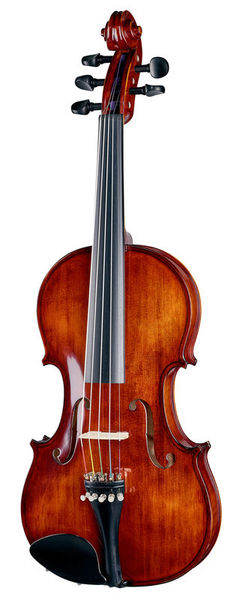
Acoustic 5-stringed violin “Antiqued Europe” available in Thomann.
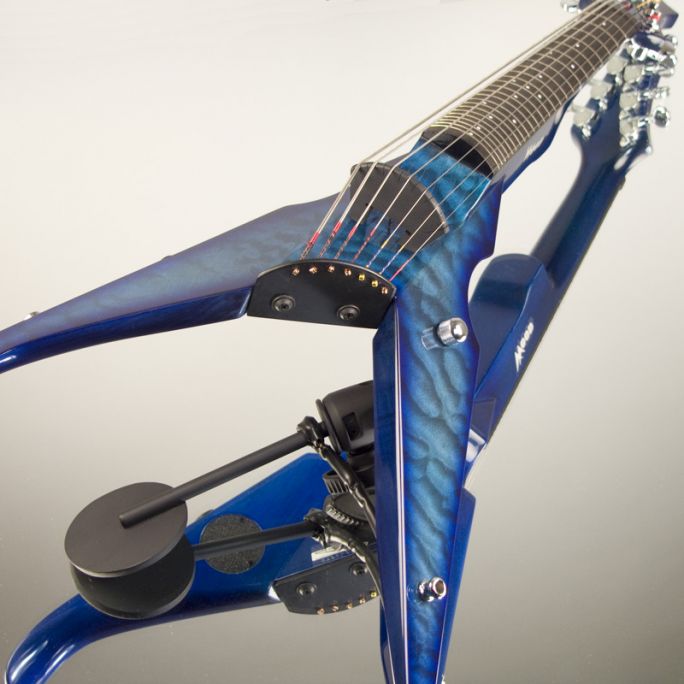
7-stringed violin, one of the Wood fretted Viper electric violins you can find at electricviolinshop.com
You can listen to an acoustic version of a 5-string violin in this video:
If you prefer the fiddling style, you will probably like this video more:
The capabilities of a 7-string violin are presented by Mark Wood in the following video:
Stroh Violin
John Matthias Augustus Stroh created the Stroh Violin. Like most violin makers, he chose to name the violin after himself.
This style of violin incorporates a metal resonator and horn, which produces a louder sound than a traditional violin. Stroh patented the design of his violin at the end of the 19th century.
While the Stroh Violin has never entered the mainstream, it’s a popular choice for folk musicians and street performers as it has a powerful tone without needing to add an amplifier.
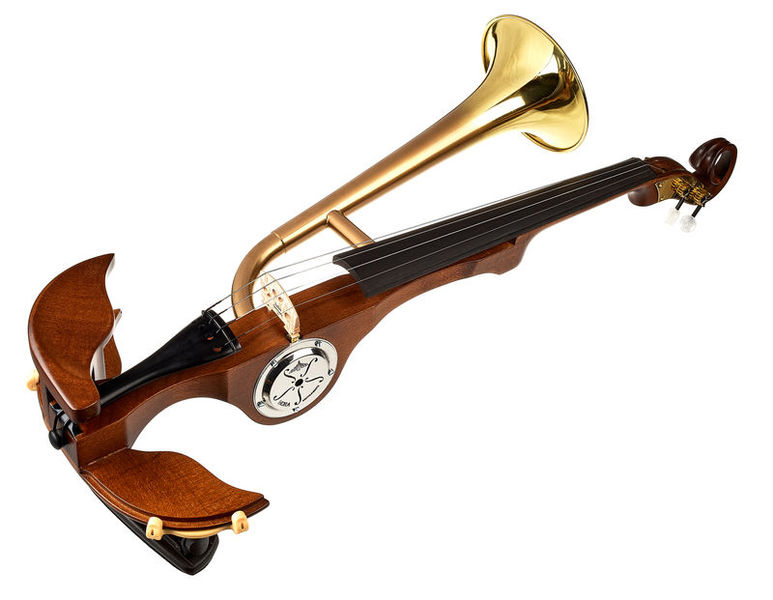
It’s one of the most versatile types of violins, even more than a modern violin. It offers the flexibility to produce everything from traditional folk to comical pizzicatos and underscores.
If you wish to experiment with this instrument, you can buy it in Thomann
Fans of Lindsey Stirling will recognize this type of violin from her music video “Roundtable Rival.”
Elsewhere in the Violin Family
While these violins are more uncommon, they’re still an interesting part of the violin family and are worth a mention in this guide.
Pochette
The pochette is a small string instrument that looks similar to a violin but is designed to fit inside your pocket. Its name – Pochette – comes from the French word for ‘small pocket’.
You’ll sometimes see it referred to as a ‘pocket fiddle’ as it was used by dance masters and street musicians from the 15th to the 19th century. The smaller size made them easier for a violinist to carry around.
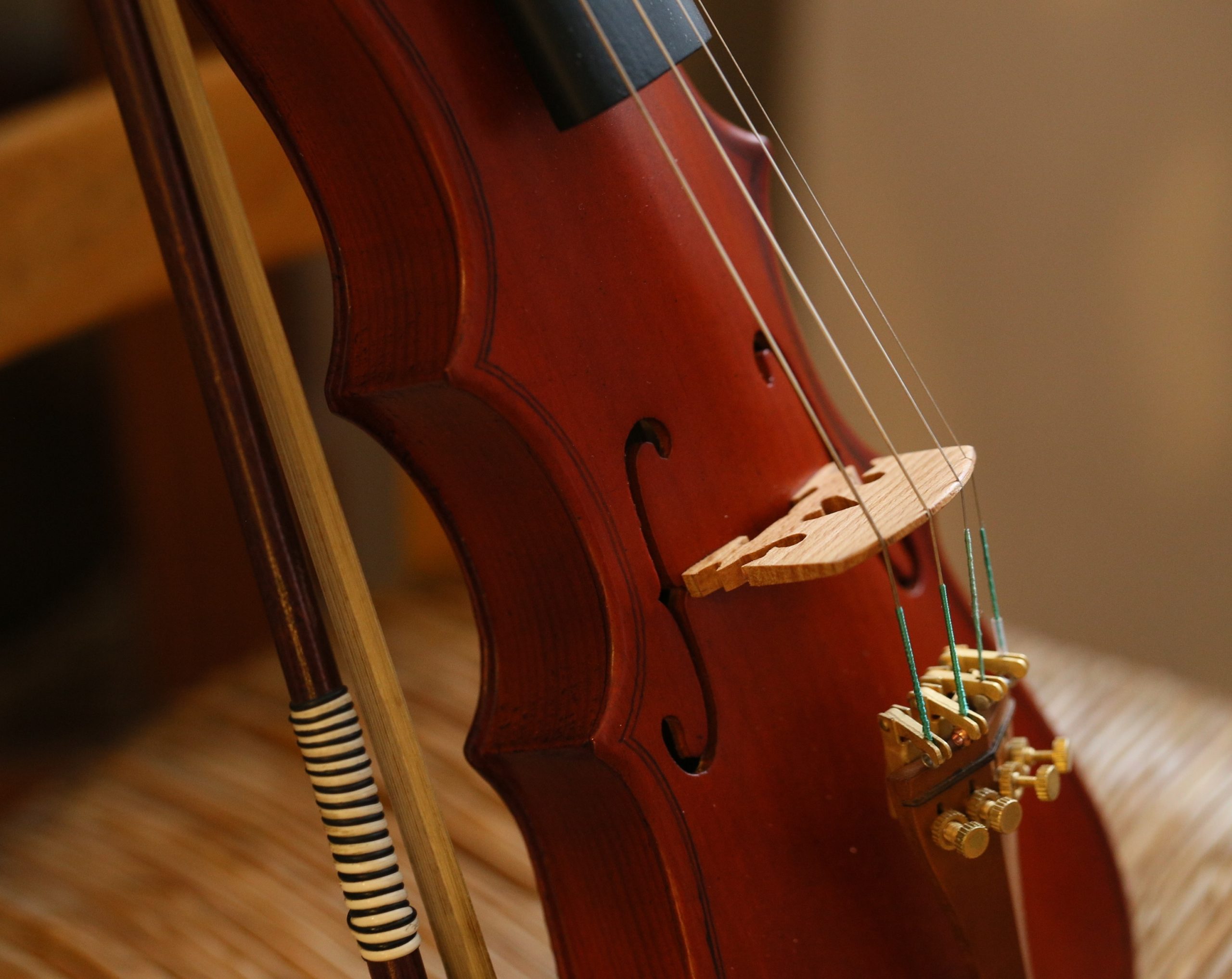
The fingerboard of a pochette remains long to preserve as much of its range as possible. This style is also called a ‘kit violin’ or a ‘sardinos‘ when it has a pear-shaped silhouette.
In this picture you can see a closeup of the sound box of a pochette. In this case, it is similar to a violin.
On the left, you can see a pochette made by one of my students – Jerry. It was made from a eucalyptus tree that grew in his garden, pine was used for the ribs, and the neck was taken from a wrecked violin of unknown provenance.
On the right is the instrument that inspired him – a pochette displayed in the Victoria and Albert Museum in London, England. It was made around 1840 in England or France. The neck, ribs, and back were made from sycamore and the front from pine.
In this case, the sound box is very simple compared to the one of a violin. Moreover, you can observe different types of holes in the front plate.
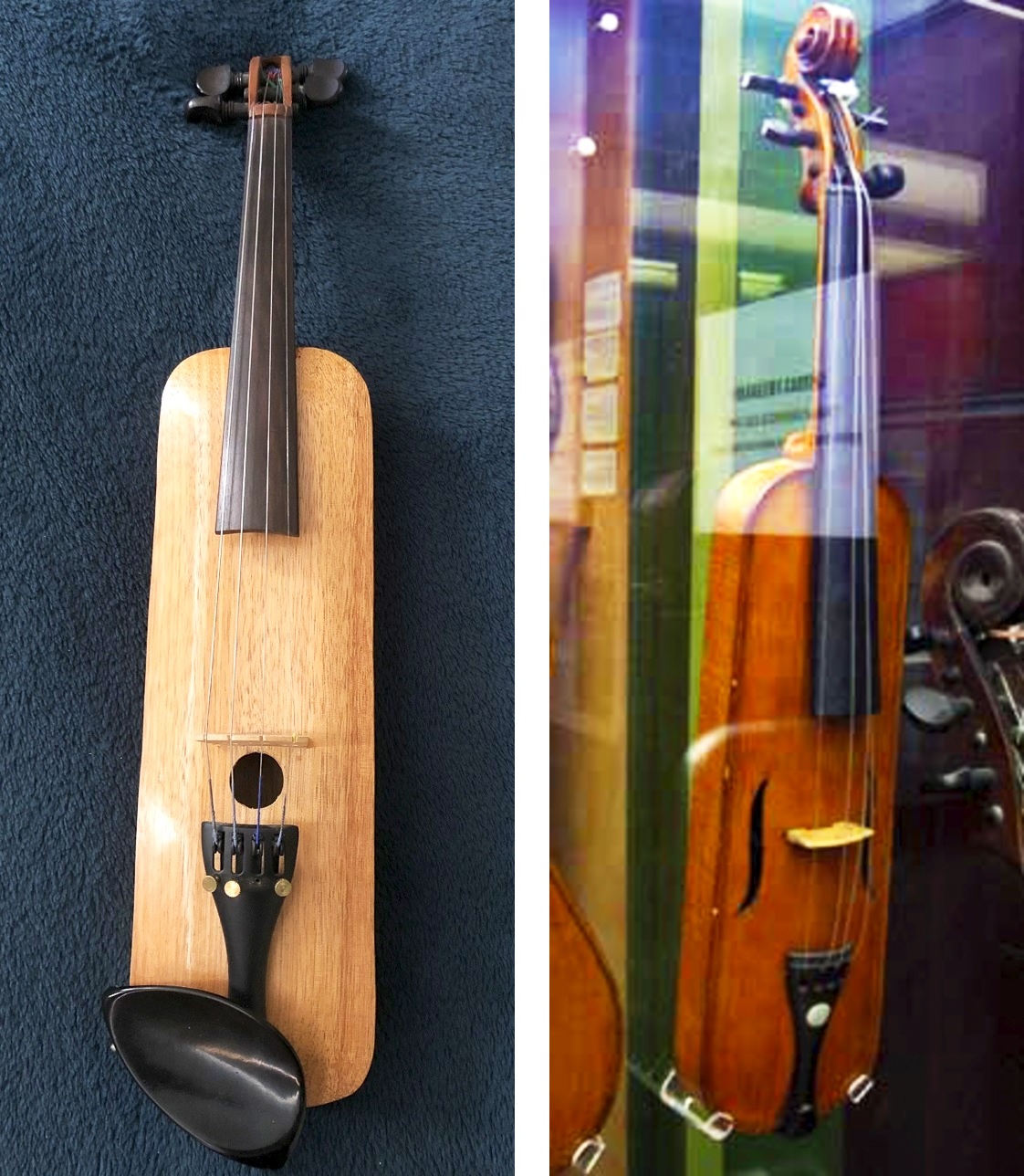
You may wonder how this violin type sounds. You can listen to it here:
Pre-Baroque Instruments
In the 16th century, we see some of the first pre-Baroque string instruments. Most of them have not survived in their original condition. While these are similar to violins, they are separate from the modern style of playing.
Pre-Baroque violins include the three-stringed violetta, which was played in an upright position, holding it in place with your chin.
Another example is viol, also called viola da gamba – this instrument has six, seven, or more strings tuned in fourths, gut frets on the fingerboard, and C-shaped holes. It has a very specific shape where the neck is connected with the body of the instrument – like in a modern double bass.
Phantasm, a viol consort, presents their instruments in the video below:
When we look at paintings from the Renaissance era, we can find evidence that instruments very similar to what we name the baroque violin were already present. The reason why we don’t know much about the violin in the Renaissance is the fact that it was used only by professionals, while the other instruments were popular among amateurs, so had a much wider use. What we do know is the fact that usually the violin was a part of an ensemble and it was used for playing dance music.
Check out the video below to listen to short tune played on a copy of a Renaissance violin:
Violin Octet
The Violin Octet was developed in the 20th century by Carleen Hutchins. These eight proportionally-sized violins are based on the traditional violin, sharing its acoustical properties. The goal of a Violin Octet is to create a more homogeneous and richer sound.
Unlike most stringed instruments, the resonance of the violin octet’s body is at a pitch towards the two middle open strings. This set-up allows for a clearer and more balanced sound.
The first violin octet was proposed by Henry Brant, an American composer, in 1957 and was completed ten years later.
A violin octet is made up of a: treble violin, soprano violin, mezzo violin, alto violin, tenor violin, baritone violin, small brass violin, and a contrabass violin.
During the development of the violin octet, there were no specific bows designed. Violinists can choose to use a variety of cello, double bass, viola, and violin bows to find the best fit.
There are currently three performing groups that use the violin octet:
- The Hutchins Consort plays Carleen Hutchins’ instruments
- The Hutchins Consort Quartet plays a subset of the violins
- The Albert Consort which is based in New York and uses the instruments made by Robert Spear.
Watch a performance of The Hutchins Consort here:
Devil’s Fiddle
While the Devil’s Fiddle began its life as a large stringed fiddle, it’s evolved over time to become a drum set. You can still find the bowed instrument in Lithuania, while the percussion style drum set is used more widely.
This stringed instrument has appeared under different names throughout history and various cultures. In German and Polish, it’s known as the ‘Devil’s Fiddle’, while the French know it as ‘Flanders Fiddle’ and in Dutch it is kuttepiel – Monkey Stick. Other names include “stump fiddle”, “devil’s stick”, “boomba”, and many more.
The original instrument was similar to a fiddle with a flexible stick acting as its body and neck. The resonator was originally an inflated animal bladder, held between the bowstring and stick. Some of these had three strings, while others had one. The Devil’s Fiddle was played by drawing the bow over the string, pressing down to change the sound.
For the modern bowed instrument, it has 1-3 strings and uses tuning pegs.
The percussion-style instrument evolved from Holland in 1675, where the pig’s bladder was replaced with a drum-like circle. It is between the stick and gut string, resonating as the string was played.
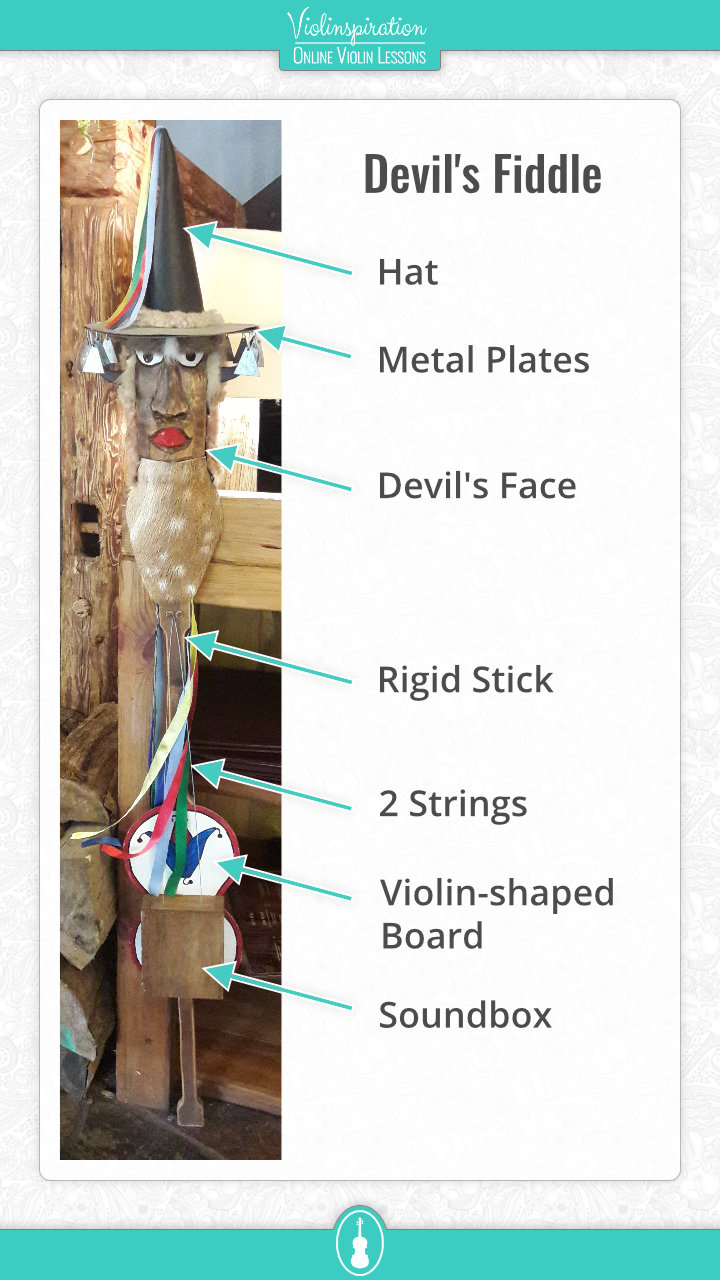
An example of Polish devil’s fiddle from the Kashubian region.
A quick demo with a comparison of a stump fiddle and a devil’s stick is shown in the video below:
Final Note
Violins have a rich history from their early evolution in the 16th century, through to the 18th century, to become what we know and love today. Understanding the different types of violins allows you to see the evolution and development of this instrument. While not every style in the violin family will appeal to you, they showcase the variety of styles on offer for any budding violinist looking to embrace a new style of music.
























